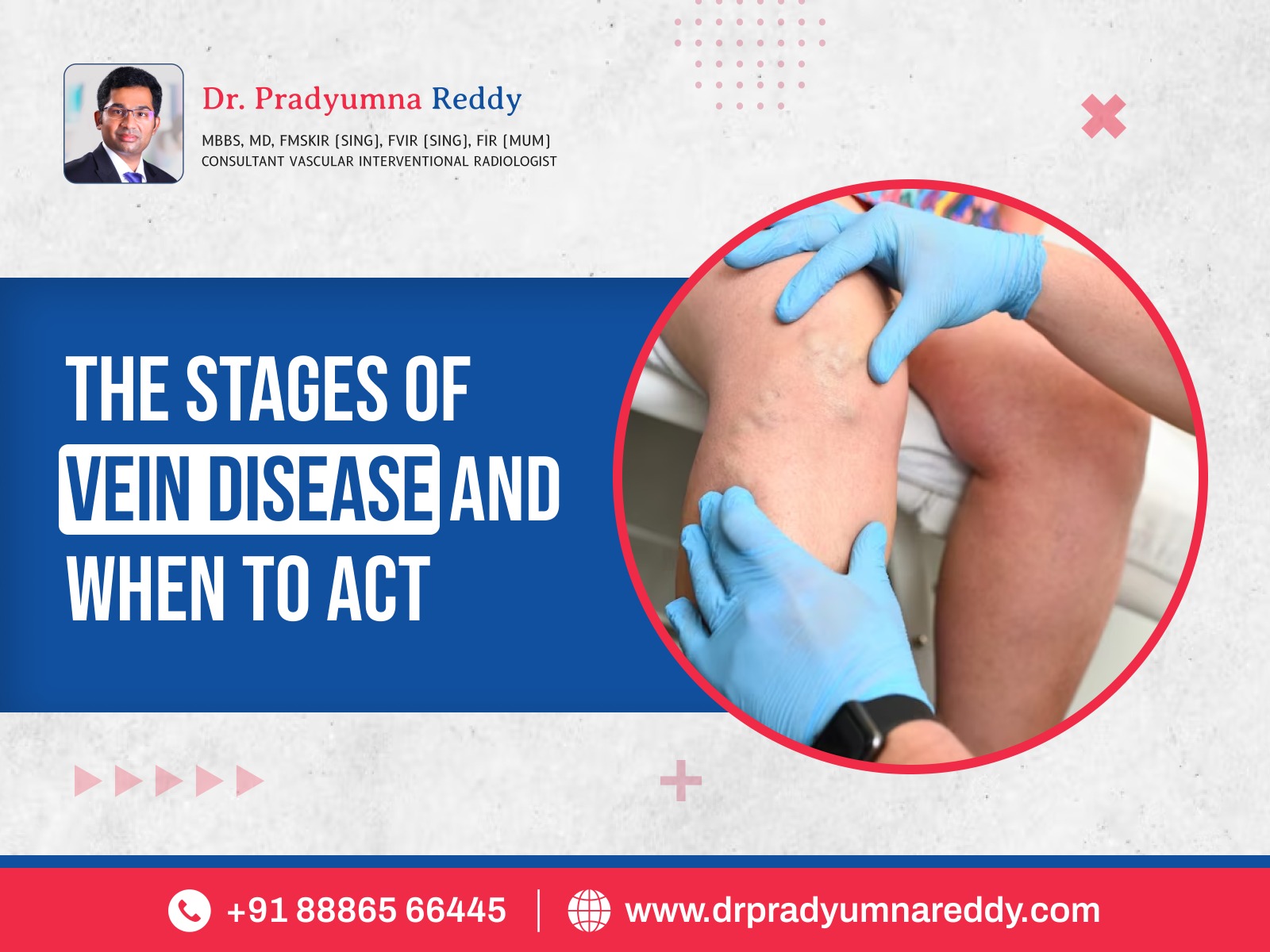Vein disease is seen in millions of people every year. But many people ignore the signs of this disease until the disease becomes serious and difficult to treat. Veins are responsible for carrying blood to the heart from other parts of the body. The veins contain valves that regulate the blood flow. If the valves get damaged or do not function well, the blood flow gets affected. The blood may leak from the damaged valves and can affect the direction of blood flow.
Like other diseases, vein disease also develops in stages. It is important to know the different stages of vein disease so that you can seek treatment early. Early recognition of the condition can help prevent the condition from progressing.
Different Stages of a Vein Disease
Vein diseases occur in stages and you may not recognize the changes in the early stages. But if your chances of developing a vein disease are high, then you should assess yourself. Knowing the stages of vein disease can help you know when to act. The following are the different stages of vein disease:
- Stage 1 – Spider veins: Spider veins are also known as reticular veins. They are tiny, and web-like veins that appear in blue, purple, or red colour. They look like small threads or clustered lines and they are almost less noticeable. They do not cause pain and do not appear like swelling or bulging. Many people ignore the signs but they can be an indication of some underlying issues. If it is left untreated for a long time, it can lead to varicose veins if the blood pooling increases. However, spider veins can be treated easily. Causes of spider veins include:
- Family history of spider veins
- Pregnancy
- Hormonal imbalances
- Obesity
- Sitting or standing for a long time
- Stage 2 – Varicose veins: Varicose veins are different from spider veins and they appear like swelling or bulged veins. Varicose veins are twisted, and swollen veins and are mostly seen in the legs and feet. This occurs when the valves get damaged and do not pump blood to the heart. Because of this, blood gets pooled in the veins and leads to varicose veins. In most cases, they can be uncomfortable and very painful. This condition can be the first sign of some underlying vein disease and you should seek assistance at this stage.
- Stage 3 – Swelling and skin discolouration: If varicose veins are not treated for a long time, it can lead to the third stage of vein disease. At this stage, the legs and ankles will begin to swell and you also notice a change in the skin’s colour. The legs swell as the body will not be able to absorb fluid due to the improper functioning of leg veins. The legs also get inflamed due to poor circulation of blood. Skin discolouration occurs due to the pooling of body fluids. The skin colour of the legs at the ankle region becomes red or pale. Open sores are common at this stage and it can be the beginning of a venous disease. Patients at this stage are also at high risk of developing high blood pressure, heart disease, etc.
- Stage 4 – Leg ulcers and sores: It is the serious and advanced phase of vein disease. At this stage, ulcers and sores start developing and they are painful and itchy. The skin tissues also break down due to poor blood circulation. The sores also do not get enough nutrients to heal and can lead to inflammation and redness. If the sores do not heal, it can lead to infection and the bacteria can even enter the legs. The vein disease at this stage is caused due to chronic vein insufficiency (CVI). The leg ulcers are extremely painful, and chronic. You cannot treat the disease at this condition with self-care and you need constant care and medical treatment.
When Should I Seek Medical Assistance?
You should seek medical assistance for a vein disease when you notice any signs or symptoms of vein disease. If the veins disease is not treated on time, it can lead to complications and can affect your quality of life. You should assess yourself and should identify if you are having any warning signs of vein disease. If you have any risk factors for developing a vein disease, then you should seek medical attention.
If the signs are identified at an early stage by being proactive, you can stop or prevent the disease from further progression.
Have Signs of a Vein Disease? Dr Pradyumna Reddy Can Help You
If you or your loved one have any signs of vein disease, you should not delay and visit a doctor immediately. Dr Pradyumna Reddy had helped several patients suffering from vein diseases in Hyderabad. He can treat vein disease at any stage and he has excelled in it. He got trained in all basic & advanced radiology methods and can help you. To book an appointment, call us or drop us an email.






